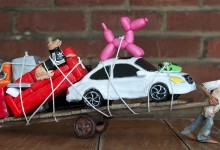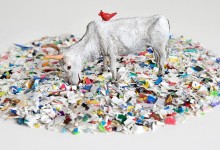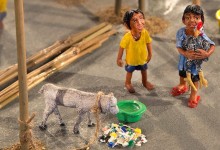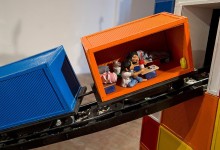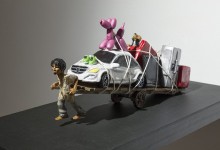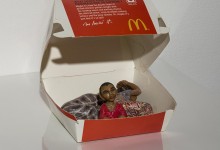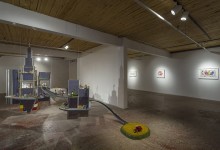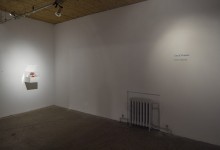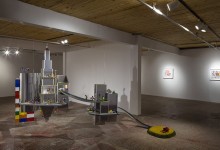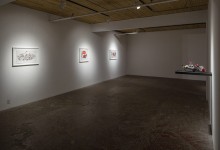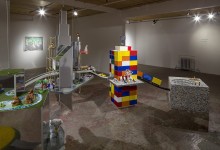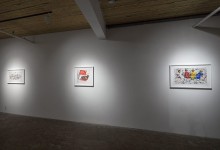Karine Giboulo: City of Dreams
Text by Amber Berson
Karine Giboulo is known for her intricate sculptures depicting the inner workings of the bureaucratic systems that Western Culture is built upon. They reveal the inner workings of cities, factories, and production lines, and reproduces exchanges that make visible the direct effects of free-market capitalism on a global scale.
Aesthetically, Giboulo’s sculptures are colourful and bright. The characters and settings seem like they were borrowed from the Claymation department of an animation studio. They can be as visually simple as one character doing one action, or as complicated as a multi-floor factory whose inner workings are illuminated through multiple access points depicting a complete story-arc.
For her exhibition City of Dreams at Art Mûr, Giboulo is presenting work that speaks to the complex issues around life in cities – near and far. Partially inspired by events she saw or experienced while participating in the Space 118 artist residency in Mumbai, India, two of the works in the series depict the life of Mumbai families that (literally) live on the street. In one, Giboulo recreates their dwelling – a McDonalds advertisement that they live under as protection from the elements and other city factors. In another, a man pulls a cart carrying goods and services. The man is bare-foot, and in old, dirty, ill-fitting clothing. His hair falls into his eyes, also dirty, and he pulls a homemade wooden cart. What trails behind him are goods that he cannot afford – he is literally performing the idea of the First World developing on the backs of the Third World. Perhaps the message is a little didactic – but the miniaturization of such enormous issues does put them back into our field of vision.
At the centre of the exhibition at Art Mûr is an imaginary floating city – an island – that represents no real place but is still somehow familiar. In this project, the artist is reflecting on immigration patterns, on urban migration and on the contrasts inherent to the reality of these issues. Giboulo’s floating city shows the inner mechanisms that propel society further and further towards industrialism. At its centre though are not bosses and masters, but people with hearts that develop community wherever they may be. Her work is a critique of brain-less capitalist structures, but underlines the human elements that can prevent this.
In the same way in which the smaller works act as a way to think about and around power imbalance, the lingering effects of colonisation and the economic and environmental manifestations of industry, Giboulo’s island city at once presents the problem and the possible solution.


